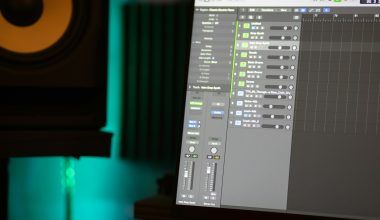If you’re an artist or music producer, 2025 is your year to shine. The music industry has evolved faster than ever, and Distribute your song on all digital stores in 2025 is no longer a luxury — it’s a necessity. With streaming platforms dominating how people consume music, reaching listeners worldwide has never been easier. But how exactly do you make it happen? Let’s dive into the steps you need to follow to get your music onto all major digital platforms.
Why Distribute your song on all digital stores in 2025 Matters More Than Ever
Before we jump into the details, let’s talk about why distributing your music is so crucial in 2025. The digital music landscape is incredibly competitive, with millions of tracks uploaded daily. Simply uploading your song to one platform isn’t enough. People listen to music on various platforms like Spotify, Apple Music, Amazon Music, and even niche services like Deezer or Tidal. By ensuring your song is available everywhere, you’re not just reaching a wider audience; you’re also increasing your chances of being discovered by new fans.
Step 1: Choose the Right Distribution Service
The first step in getting your song on all digital stores is selecting a reliable distribution service. These services act as the bridge between you and the streaming platforms. Popular options in 2025 include DistroKid, TuneCore, Delivermytune, and Amuse. Each platform has its unique features, pricing, and payout structures, so it’s essential to choose one that aligns with your goals.
For example, if you want unlimited uploads for a flat annual fee, DistroKid might be your best bet. On the other hand, if you prefer paying per release, TuneCore could be a better option. Research each service carefully and read reviews to find the one that suits your needs.
Step 2: Prepare Your Music for Distribution
Before uploading your song, make sure it’s ready for the big leagues. Here’s a quick checklist:
- Audio Quality: Ensure your track meets industry standards. Most platforms require a minimum quality of 16-bit/44.1kHz WAV files.
- Artwork: Create eye-catching cover art that represents your music. The standard size is 3000 x 3000 pixels, and it should be in JPG or PNG format.
- Metadata: Prepare accurate song details like title, artist name, genre, and release date. Double-check everything to avoid mistakes.
These elements not only make your release look professional but also increase its chances of being featured on playlists and recommendations.
Step 3: Upload Your Song
Once you’ve selected a distributor and prepared your music, it’s time to upload your track. Most distribution platforms have user-friendly dashboards where you can easily add your music. During this process, you’ll need to:
- Upload your audio file.
- Add your artwork.
- Enter metadata like song title, artist name, and lyrics.
- Select a release date.
- Choose which stores and platforms you want your song to appear on.
Don’t rush through this step. Accuracy is key, and a mistake here could delay your release.
Step 4: Set Your Release Date
Timing is everything when it comes to releasing music. Ideally, you should set your release date at least two weeks in advance. This gives your distributor enough time to deliver your song to all platforms and ensures it’s available everywhere on the same day.
A well-planned release date also gives you time to build anticipation with your audience. Use this period to tease snippets of your song, share behind-the-scenes content, and engage with your fans on social media.
Step 5: Promote Your Song
Distributing your song is just the beginning. To make an impact, you need to promote it effectively. Here are some strategies to consider:
- Social Media Campaigns: Share your music on platforms like Instagram, TikTok, and Twitter. Use hashtags and trends to reach a larger audience.
- Playlist Pitching: Submit your song to playlists on Spotify, Apple Music, and other platforms. Getting featured on a popular playlist can skyrocket your streams.
- Collaborations: Partner with influencers, bloggers, or other artists to promote your track.
- Email Marketing: Send your song to your email subscribers. Include a personal message to make it more engaging.
Promotion is an ongoing process, so keep experimenting with different approaches to see what works best for your music.
Step 6: Track Your Performance
After your song is live, monitoring its performance is crucial. Most distribution services offer analytics that show how your music is doing across different platforms. Pay attention to metrics like streams, downloads, and listener demographics.
These insights can help you understand your audience better and plan future releases accordingly. For example, if you notice a significant number of listeners from a specific country, you could tailor your marketing efforts to target that region.
Step 7: Keep Your Catalog Updated
One song is just the beginning. To build a loyal fanbase, you need to release music consistently. Use the same distribution process for your future tracks and keep your catalog updated across all platforms. The more music you have available, the higher your chances of reaching new listeners.
The Future of Digital Music Distribution
Distribute your song on all digital stores in 2025, the digital music landscape will continue to evolve. New platforms and technologies are emerging, offering even more opportunities for artists to connect with their audience. Staying informed about these trends and adapting your strategy will ensure your music reaches as many people as possible.
Remember, Distribute your song on all digital stores in 2025 is just the first step. To truly succeed, you need to combine it with consistent promotion, audience engagement, and high-quality music production. With the right approach, 2025 could be your breakthrough year in the music industry.
Related Articles:
For further reading, explore these related articles:
For additional resources on music marketing and distribution, visit DMT RECORDS PRIVATE LIMITED.






